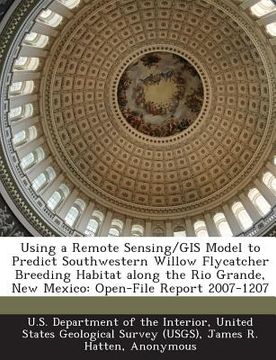Using a Remote Sensing/GIS Model to Predict Southwestern Willow Flycatcher Breeding Habitat Along the Rio Grande, New Mexico: Open-File Report 2007-12 (en Inglés)
Reseña del libro "Using a Remote Sensing/GIS Model to Predict Southwestern Willow Flycatcher Breeding Habitat Along the Rio Grande, New Mexico: Open-File Report 2007-12 (en Inglés)"
The Southwestern Willow Flycatcher (Empidonax traillii extimus; hereafter SWFL) is a federally endangered bird (USFWS 1995) that breeds in riparian areas in portions of New Mexico, Arizona, southwestern Colorado, extreme southern Utah and Nevada, and southern California (USFWS 2002). Across this range, it uses a variety of plant species as nesting/breeding habitat, but in all cases prefers sites with dense vegetation, high canopy, and proximity to surface water or saturated soils (Sogge and Marshall 2000). As of 2005, the known rangewide breeding population of SWFLs was roughly 1,214 territories, with approximately 393 territories distributed among 36 sites in New Mexico (Durst et al. 2006), primarily along the Rio Grande. One of the key challenges facing the management and conservation of the Southwestern Willow Flycatcher is that riparian areas are dynamic, with individual habitat patches subject to cycles of creation, growth, and loss due to drought, flooding, fire, and other disturbances. Former breeding patches can lose suitability, and new habitat can develop within a matter of only a few years, especially in reservoir drawdown zones. Therefore, measuring and predicting flycatcher habitat - either to discover areas that might support SWFLs, or to identify areas that may develop into appropriate habitat - requires knowledge of recent/current habitat conditions and an understanding of the factors that determine flycatcher use of riparian breeding sites. In the past, much of the determination of whether a riparian site is likely to support breeding flycatchers has been based on qualitative criteria (for example, 'dense vegetation' or 'large patches'). These determinations often require on-the-ground field evaluations by local or regional SWFL experts. While this has proven valuable in locating many of the currently known breeding sites, it is difficult or impossible to apply this approach effectively over large geographic areas (for example, the mid

